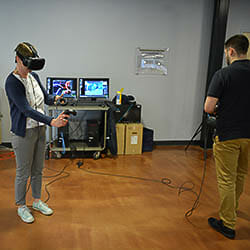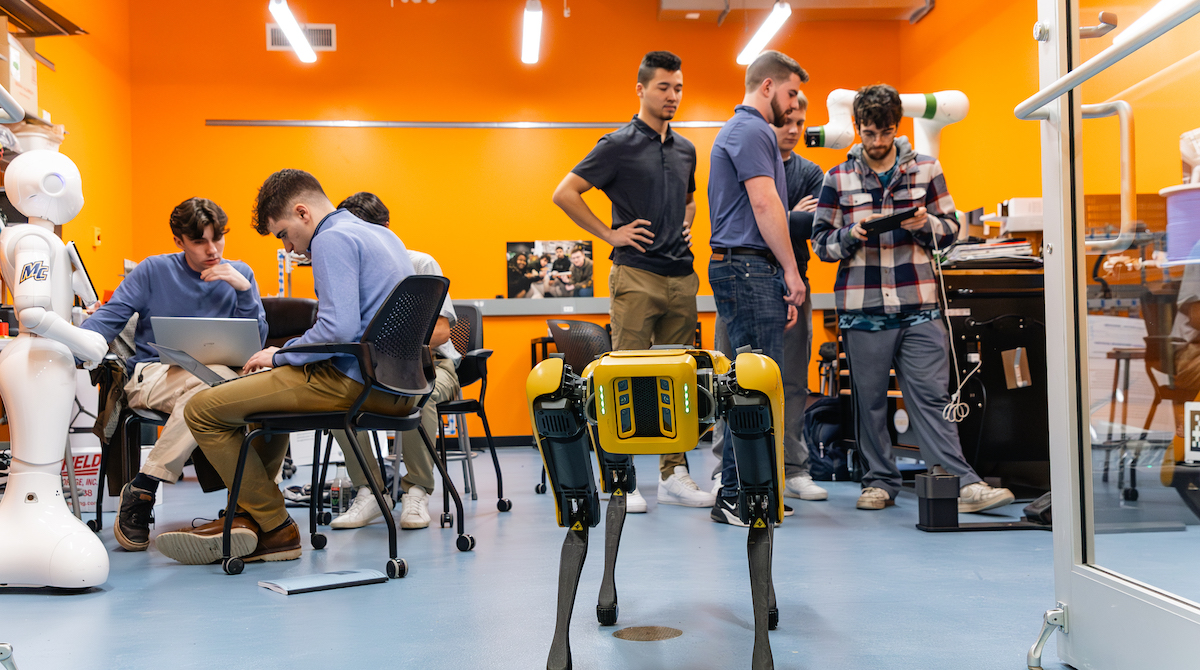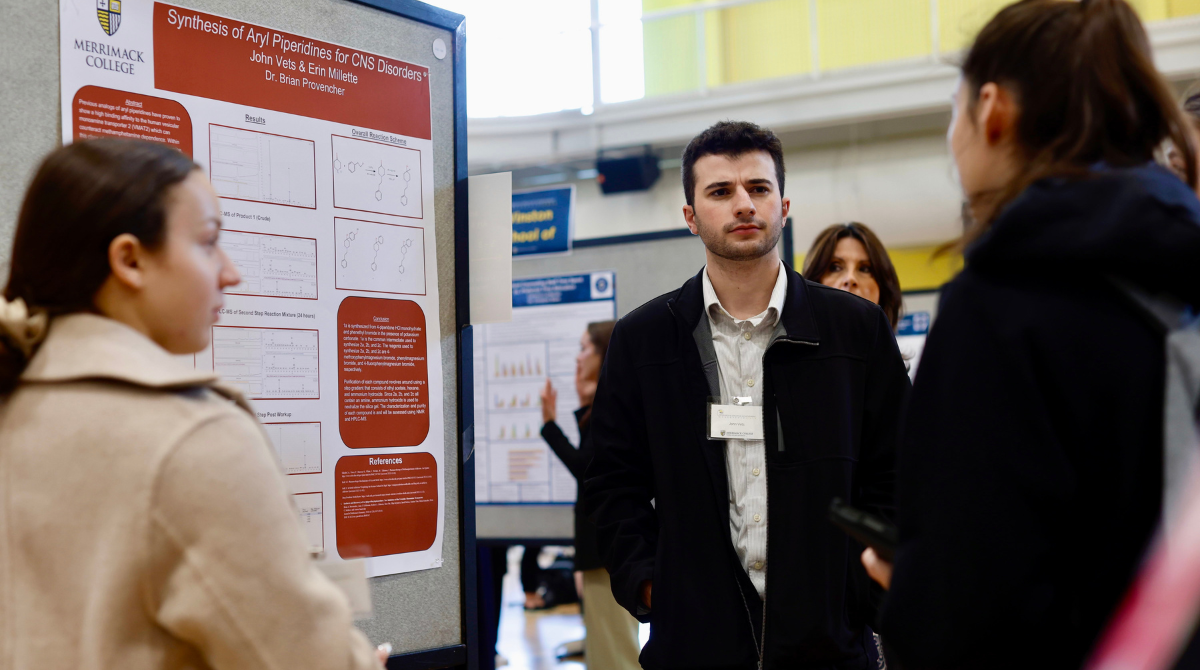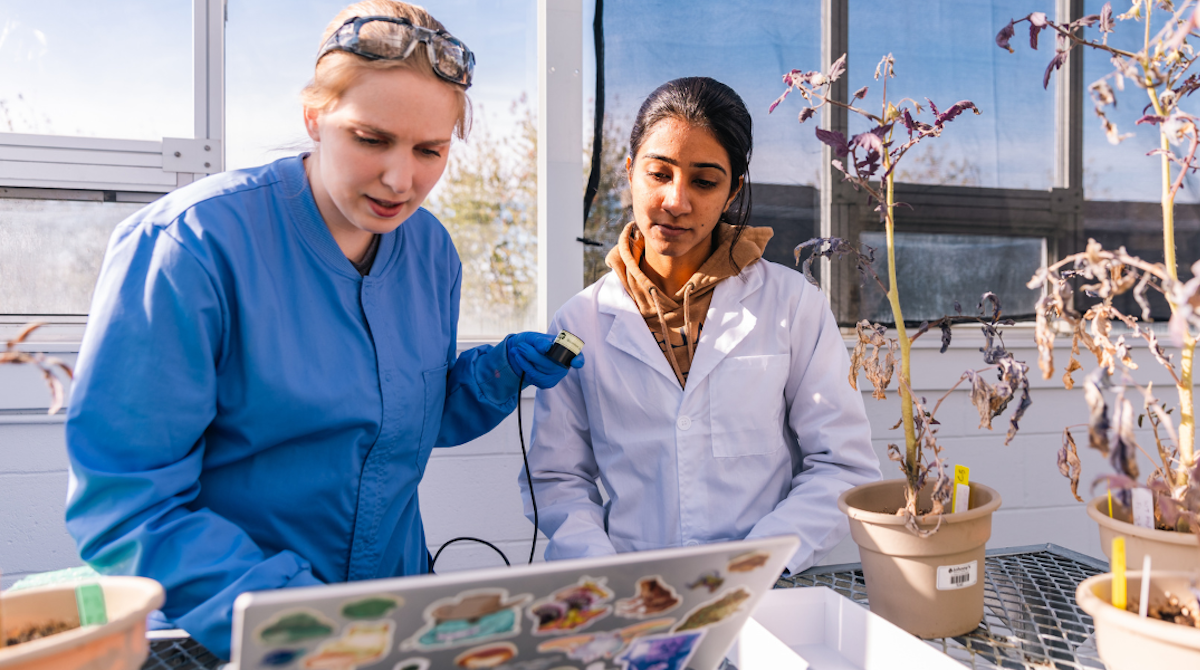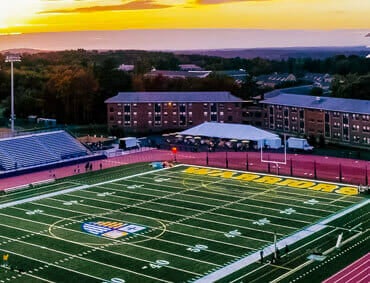Adjunct lecturer Andrew Cannon will pilot use of the devices in his anatomy class this summer to teach students about body muscles, organs and bones.
“This is really innovative,” said CETL’s director, Kathy Nielsen. “There aren’t many schools that are going to try to implement virtual and augmented glasses in the classroom.”
Devices like virtual goggles have been shown to help students understand and retain course materials better than books or lectures alone.
“I really feel when you put them on, you’re immersed in the scenario,” said Associate Professor of Chemistry Jimmy Franco, a CETL faculty fellow who led the effort to secure the devices with a Provost Innovation Fund grant.
Goggle users step into a virtual 3-D world with graphics so stunning, you’d swear it is real. During a demonstration at the college’s annual Research and Creative Achievement Conference May 2 at Lawler Rink, students were “transported” deep undersea on the deck of a sunken ship sitting at the edge of a deep gorge. Suddenly, marine life swims past, including a gigantic whale that appears to be no more than a few feet away.
“It was crazy,” exclaimed Kellie Bent ’17, an education major from West Roxbury, Massachusetts. “There was a whale right next to me, and I was afraid I’d get hit by it.”
Most of the apps in development for academic settings focus on putting the user inside the human body and individual cells. These are ideal for use in teaching, say, chemistry, where cells interact on three-dimensional level.
“This gives us a whole new platform where students can visualize molecules in 3-D,” Franco said.
Liberal arts students, meanwhile, have their own engaging programs in which they can explore far-flung places such as the Sistine Chapel or create art in 3-D.
Each pair of goggles is attached by a cord to a dedicated computer that runs the application. A two-dimensional view of the user’s experience is projected to a monitor for the benefit of the instructor and other students.
CETL faculty fellows have half-time course loads while they pursue ways to introduce innovation and research-based teaching and learning to campus
In Franco’s case, the results were eye-opening.
